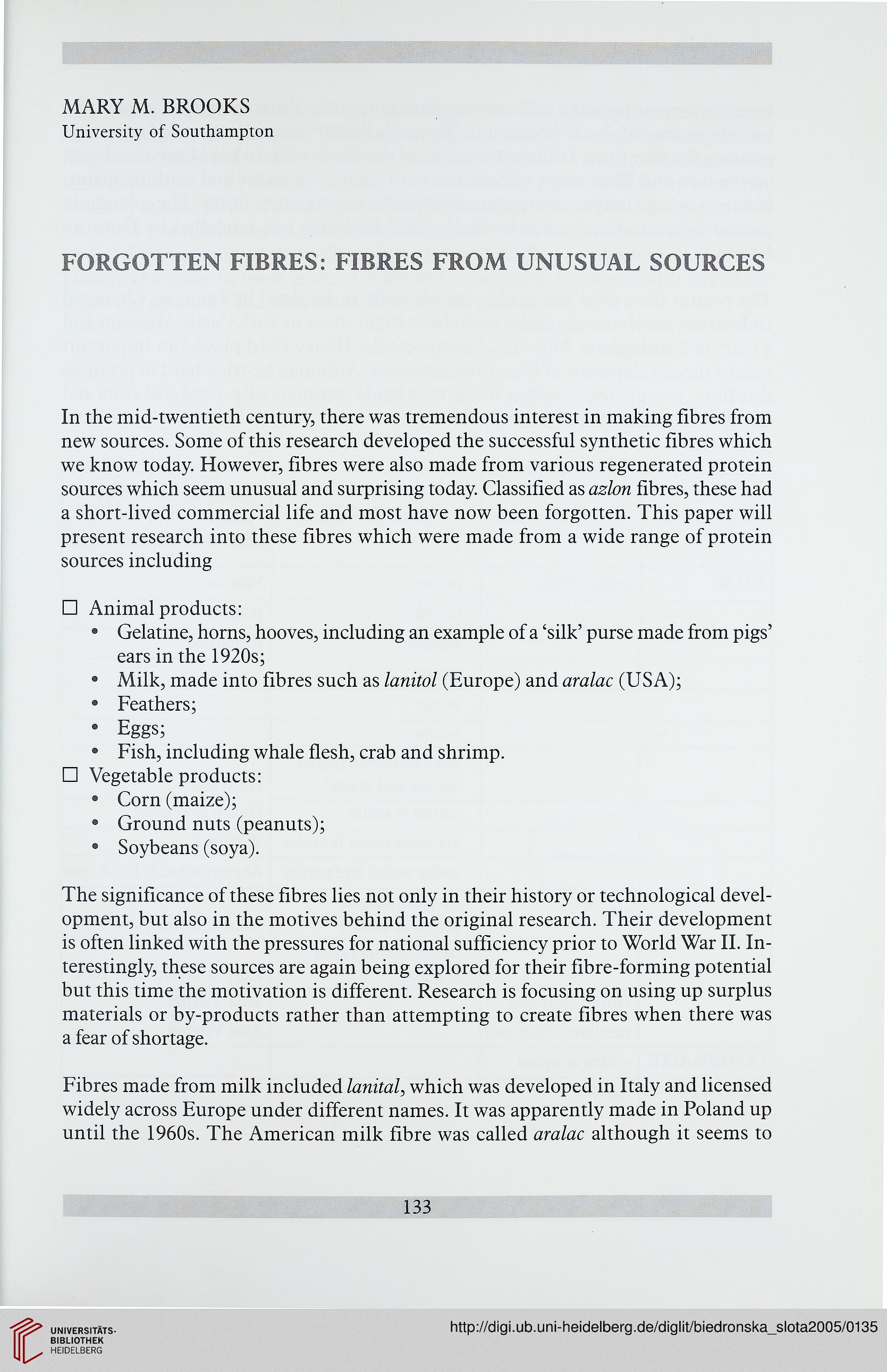MARY M. BROOKS
University of Southampton
FORGOTTEN FIBRES: FIBRES FROM UNUSUAL SOURCES
In the mid-twentieth century, there was tremendous interest in making fibres from
new sources. Some of this research developed the successful synthetic fibres which
we know today. However, fibres were also made from various regenerated protein
sources which seem unusual and surprising today. Classified as azlon fibres, these had
a short-lived commercial life and most have now been forgotten. This paper will
present research into these fibres which were made from a wide rangę of protein
sources including
□ Animal products:
• Gelatine, horns, hooves, including an example of a 'silk' purse made from pigs'
ears in the 1920s;
• Milk, made into fibres such as lanitol (Europę) and aralac (USA);
• Feathers;
• Eggs;
• Fish, including whale flesh, crab and shrimp.
□ Vegetable products:
• Corn (maize);
• Ground nuts (peanuts);
• Soybeans (soya).
The significance of these fibres lies not only in their history or technological devel-
opment, but also in the motives behind the original research. Their development
is often linked with the pressures for national sufficiency prior to World War II. In-
terestingly, these sources are again being explored for their fibre-forming potential
but this time the motivation is different. Research is focusing on using up surplus
materials or by-products rather than attempting to create fibres when there was
a fear of shortage.
Fibres made from milk included lanital, which was developed in Italy and licensed
widely across Europę under different names. It was apparently made in Poland up
until the 1960s. The American milk fibrę was called aralac although it seems to
University of Southampton
FORGOTTEN FIBRES: FIBRES FROM UNUSUAL SOURCES
In the mid-twentieth century, there was tremendous interest in making fibres from
new sources. Some of this research developed the successful synthetic fibres which
we know today. However, fibres were also made from various regenerated protein
sources which seem unusual and surprising today. Classified as azlon fibres, these had
a short-lived commercial life and most have now been forgotten. This paper will
present research into these fibres which were made from a wide rangę of protein
sources including
□ Animal products:
• Gelatine, horns, hooves, including an example of a 'silk' purse made from pigs'
ears in the 1920s;
• Milk, made into fibres such as lanitol (Europę) and aralac (USA);
• Feathers;
• Eggs;
• Fish, including whale flesh, crab and shrimp.
□ Vegetable products:
• Corn (maize);
• Ground nuts (peanuts);
• Soybeans (soya).
The significance of these fibres lies not only in their history or technological devel-
opment, but also in the motives behind the original research. Their development
is often linked with the pressures for national sufficiency prior to World War II. In-
terestingly, these sources are again being explored for their fibre-forming potential
but this time the motivation is different. Research is focusing on using up surplus
materials or by-products rather than attempting to create fibres when there was
a fear of shortage.
Fibres made from milk included lanital, which was developed in Italy and licensed
widely across Europę under different names. It was apparently made in Poland up
until the 1960s. The American milk fibrę was called aralac although it seems to





